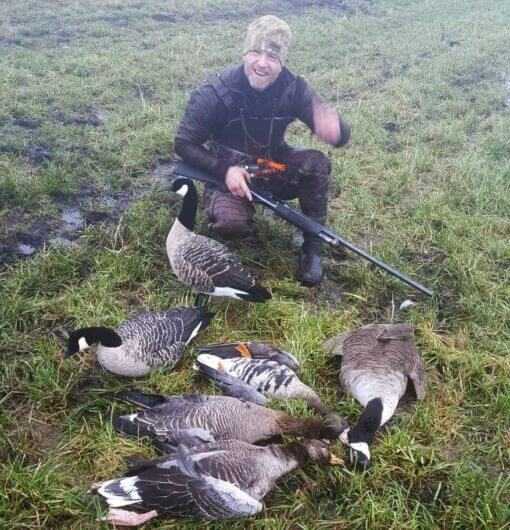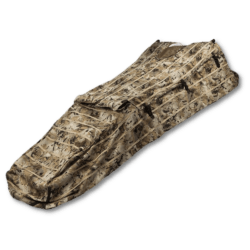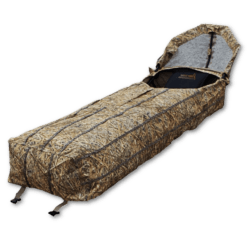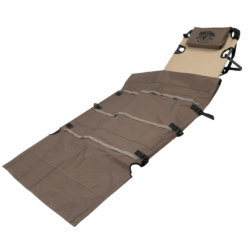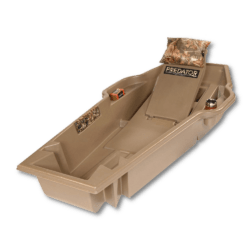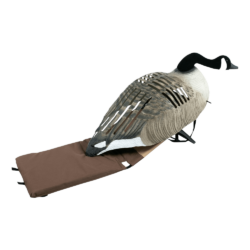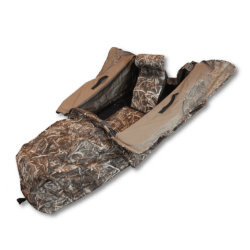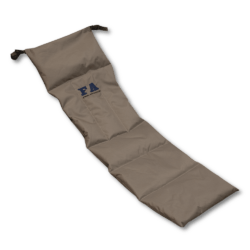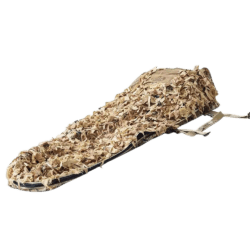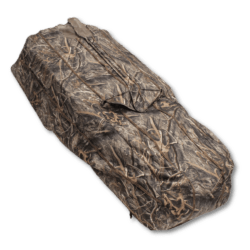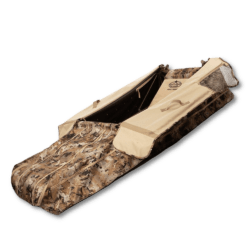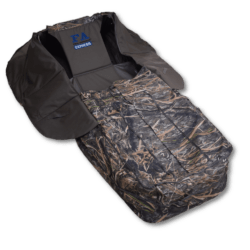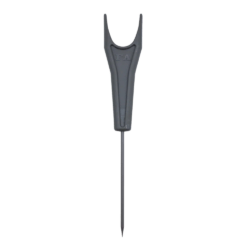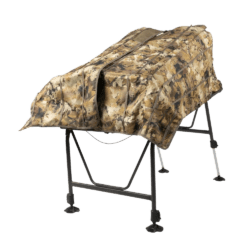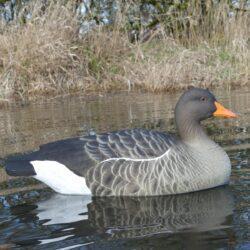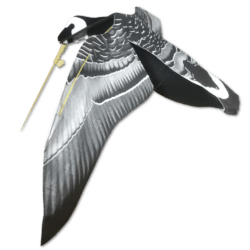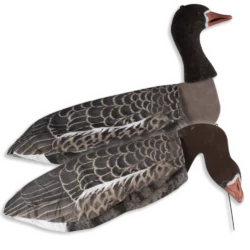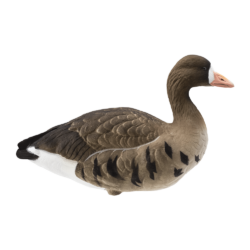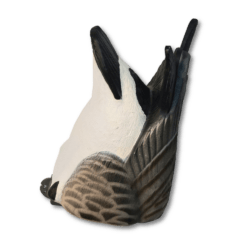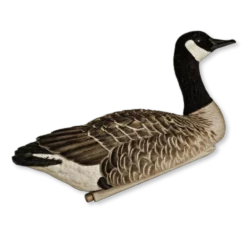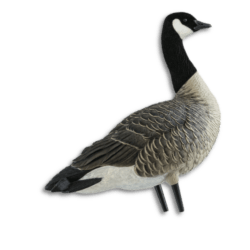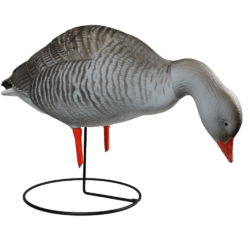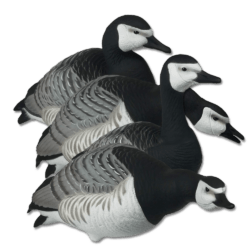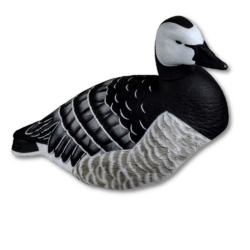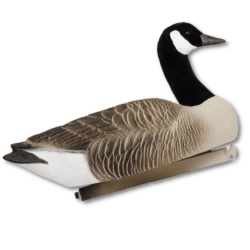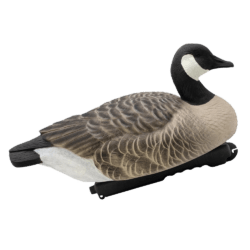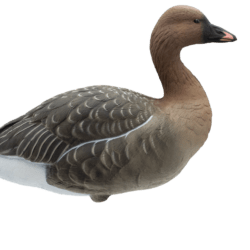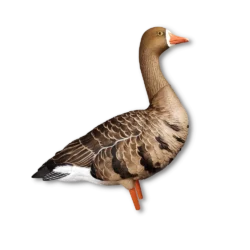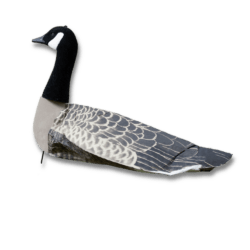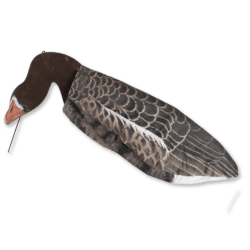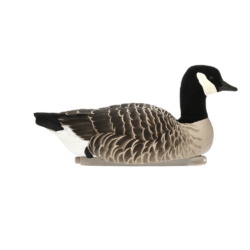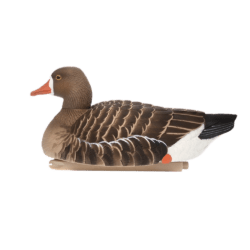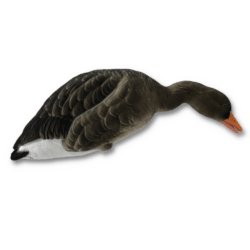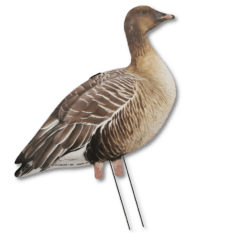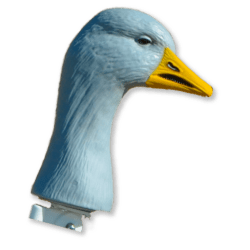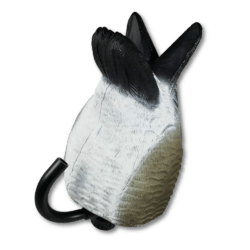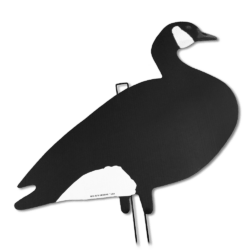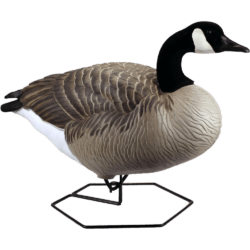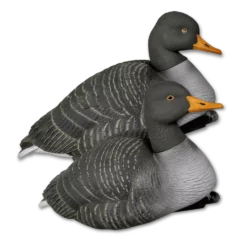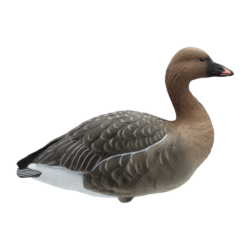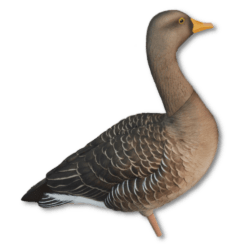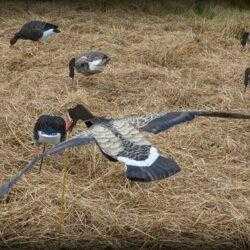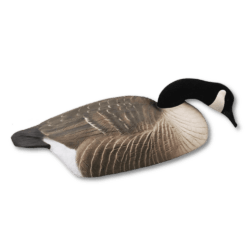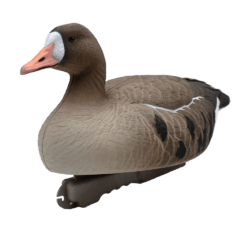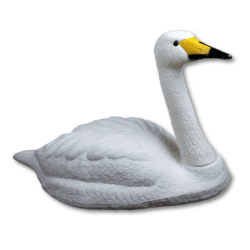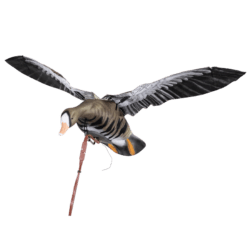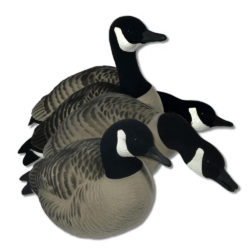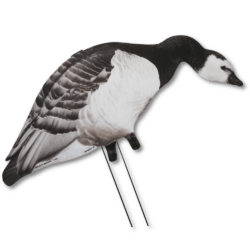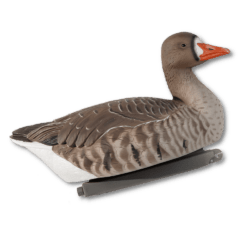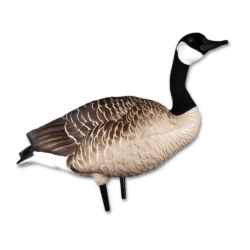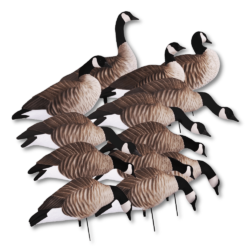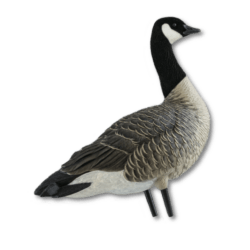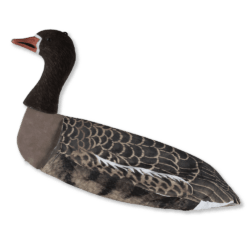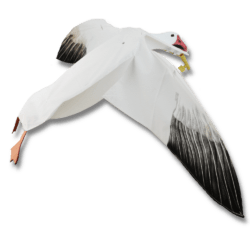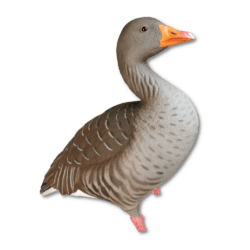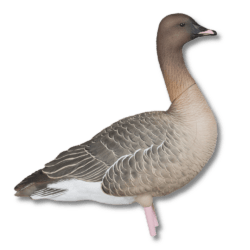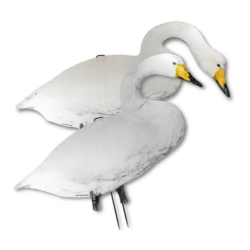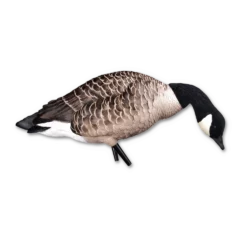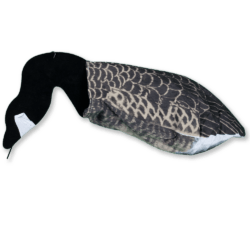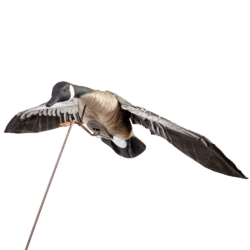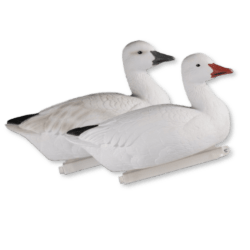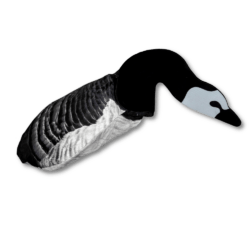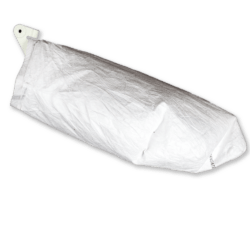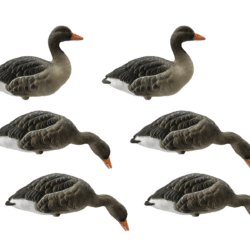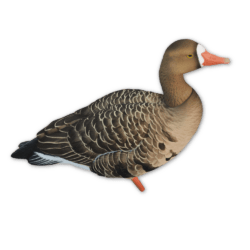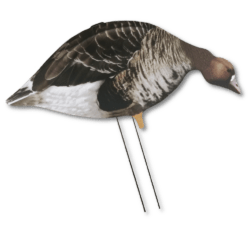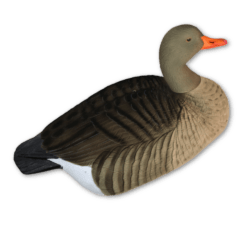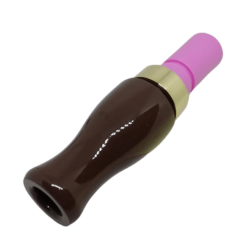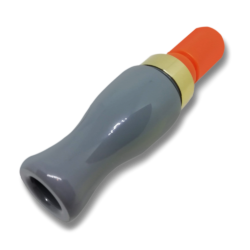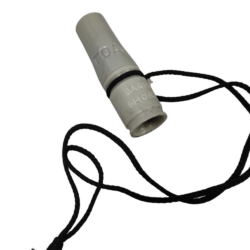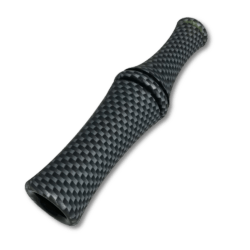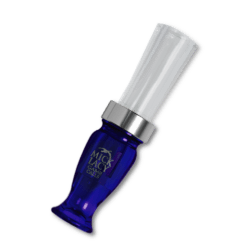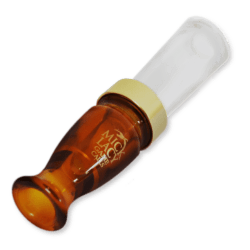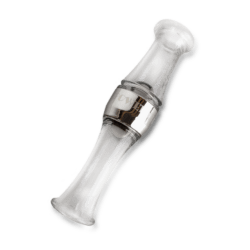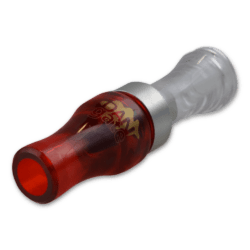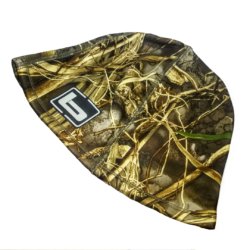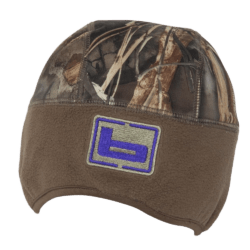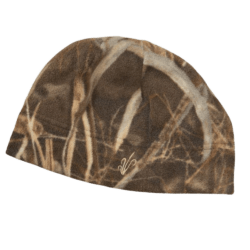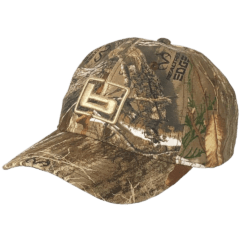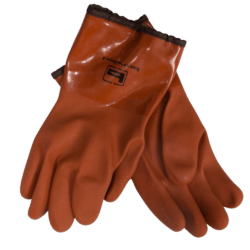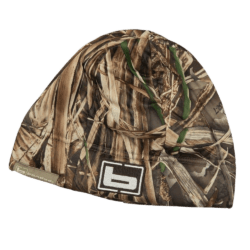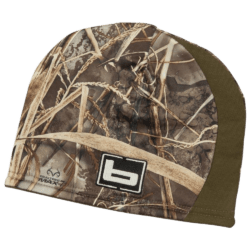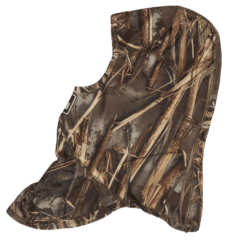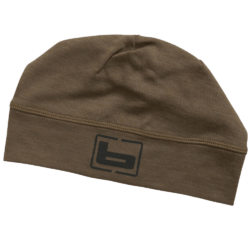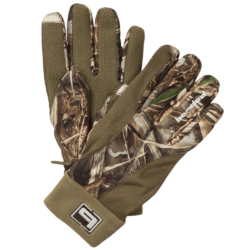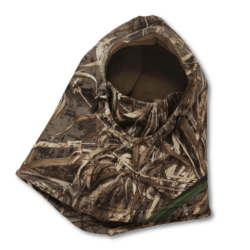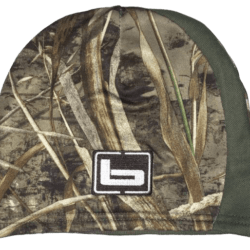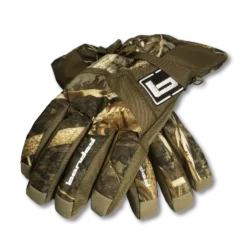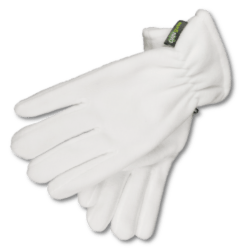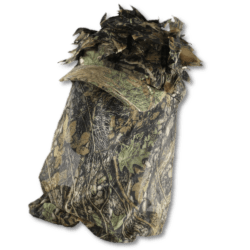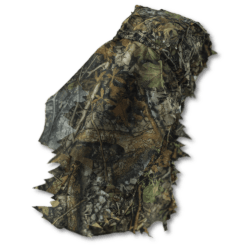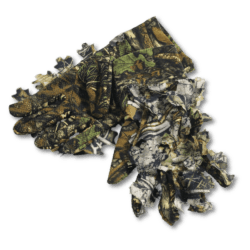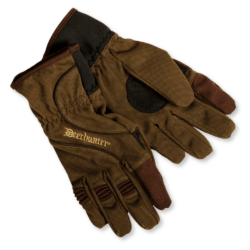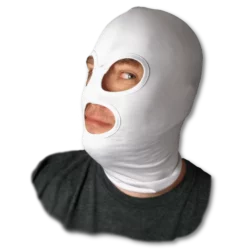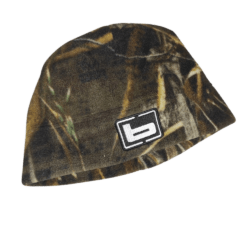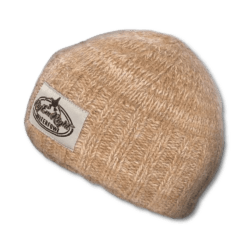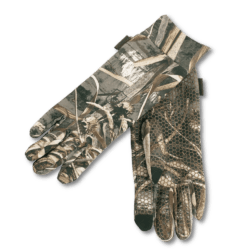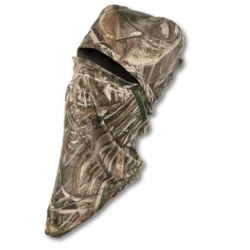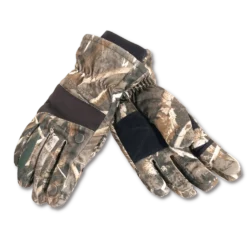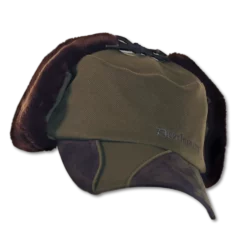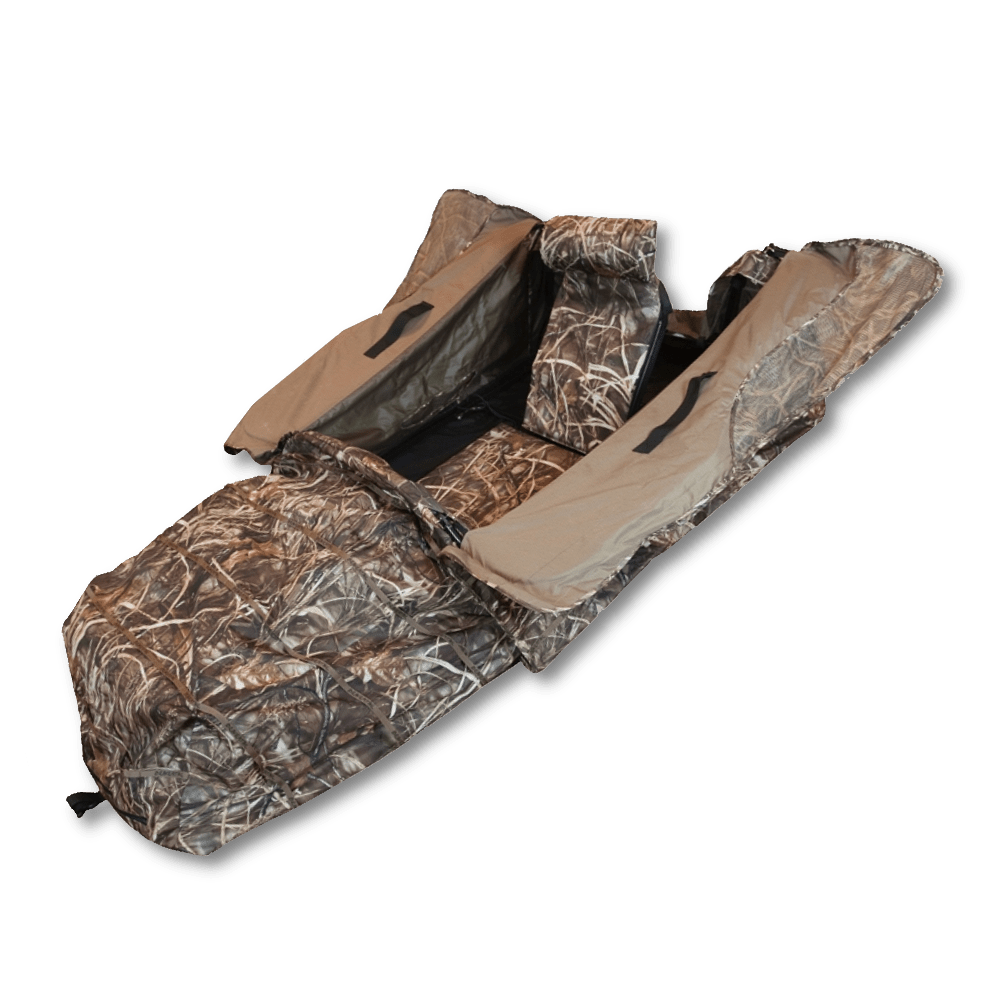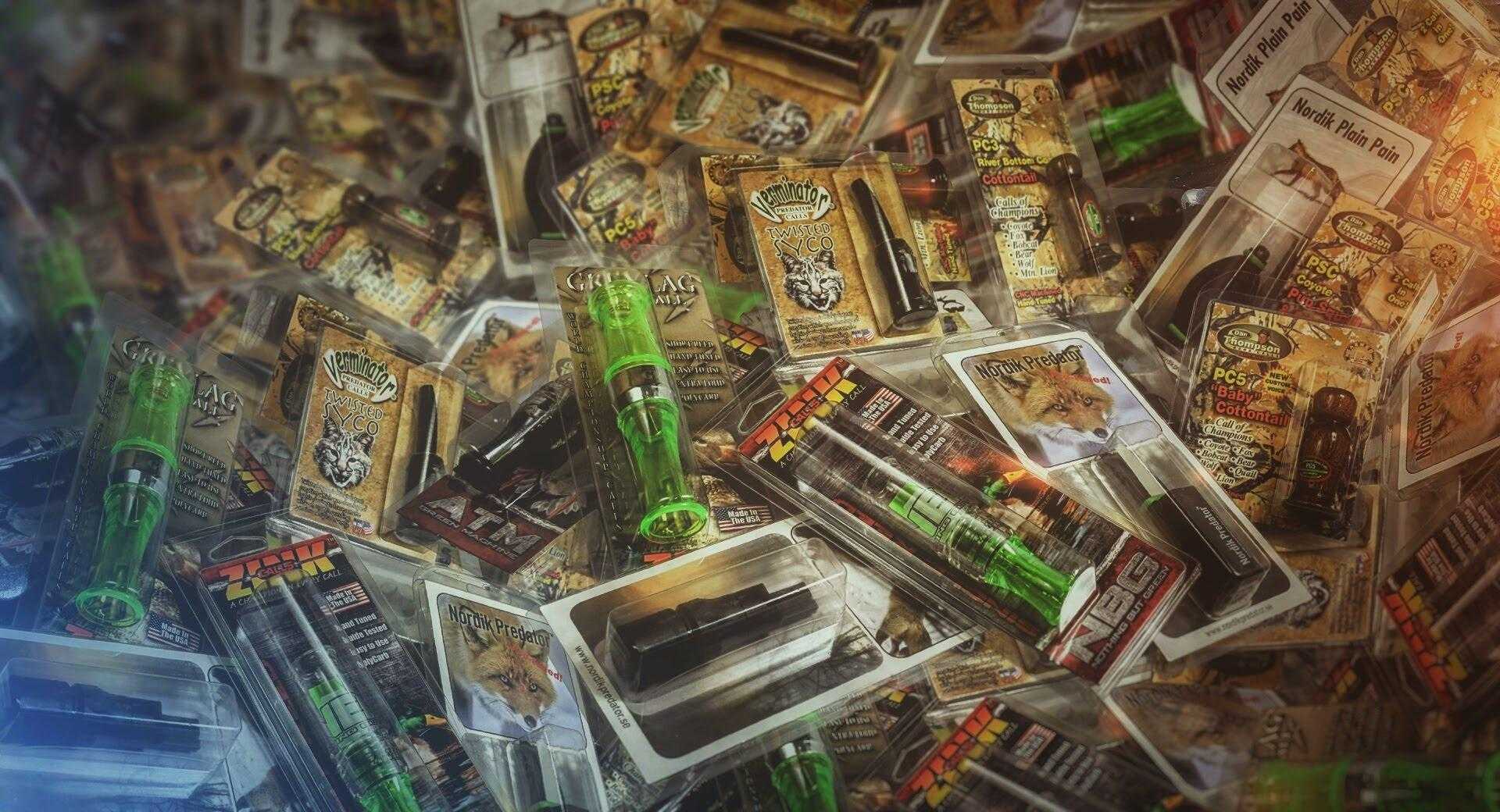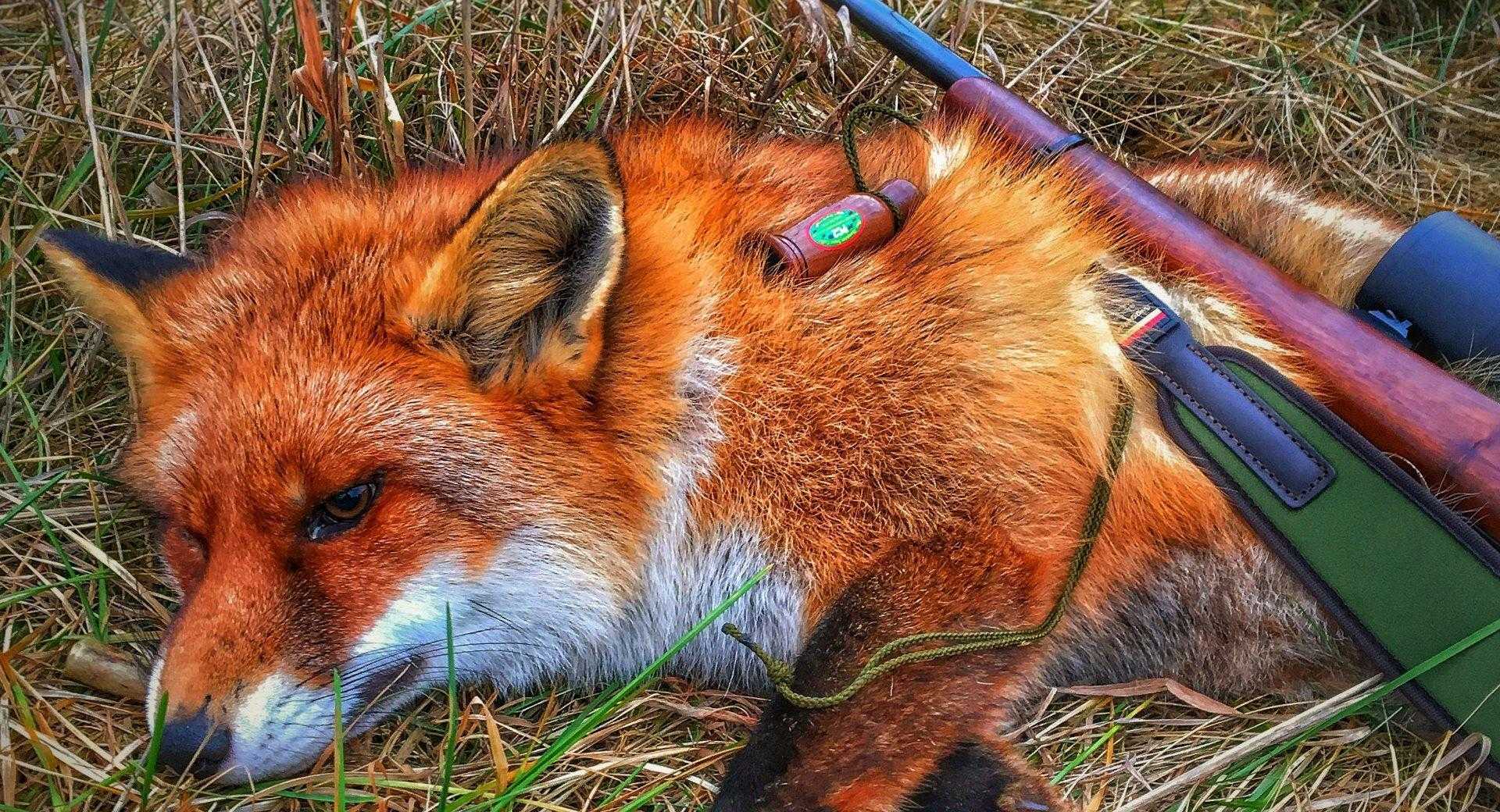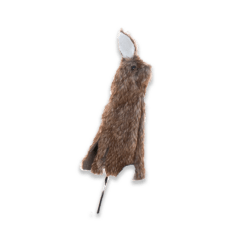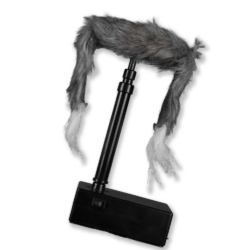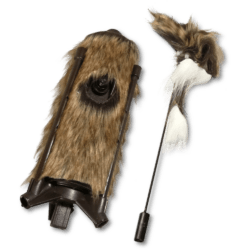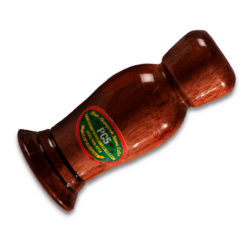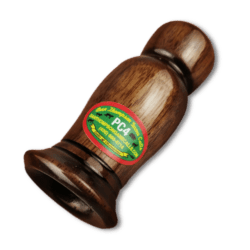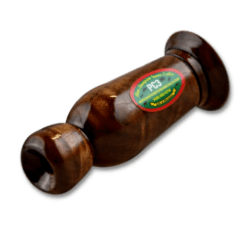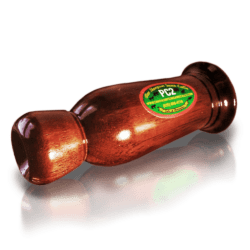Goose hunting offers loads of fantastic experiences in nature with good hunting companions and at the same time also contain everything you as a hunter could wish for in terms of challenge and action.
Written by Klaus Nymark Nielsen
Goose hunting is a hunting form in a league of its own and a burning passion for many hunters. There are also those who make it simpler and just want to sit in a windbreak or a ditch and shoot a single goose or two, once in a while.
But the geese are numerous like never before and more hunters than ever now have the opportunity to shoot geese on their territories. Some hunters have been goose hunting for many years and have extensive experience, while others have to start a whole new chapter in their hunting life. Here is a guide to goose hunting based on the experiences I have gained with goose hunting over the past 30 years. A big welcome to those of you who are about to get started. Just keep at it and remember that persistence pays off.

Goose hunting can be hard work, and you generally get paid as you are owed! If you have done your job well, you will most often also be rewarded. One cannot say that there is any method that is more right than others, as long as you do everything you can to avoid wounding. You can do a lot to optimize your chances of a successful hunt by gaining solid knowledge in the field. In this article you will get some of that help.
THE GOOSE HUNTING ATMOSPHERE
The small flock of greylag geese turn around and goes up against the wind for the 3rd time. Our hunting blinds are tucked away in the tall wheat stumps and in front and between us stands a larger flock of mixed shells and full body decoy geese. They move easily in the wind and look like a flock of foraging and resting birds on a stump field. The geese talk and I listen carefully to their sounds and speak (with few deviations) consistently the same language in my goose call. I study their reaction and adjust my calling accordingly. The large birds descend and are now at the same time heading straight for the zone in the decoy formation, where we made a large approach and landing site early this morning. The carefully selected area in our setup is where we want the birds to steer towards and prepare for landing and which will give us four excited hunters the most optimal opportunity to deliver dead-shot geese on sound and short shooting range. Now the geese are so close that we can clearly see how they turn their heads from side to side to find out if it is safe to go down.
In the shelters we hold our breath, the adrenaline pumps in the veins and the tension is almost unbearable. People are 100% percent focused on laying completely still, and the moment of truth is only a split second away. Then suddenly it goes wrong regardless! As the geese approach from 30 meters away, the front goose sense that something is wrong and emits a scream of anxiety. In the next few seconds we now hear a whole chorus of this characteristic sound of fleeing geese and at the same time the equally characteristic sound of the geese’s outer swing feathers as they pull backwards and away. When the geese have disappeared, we get up to a sitting position, exhale, smile broadly at each other, discharge and go out in front of our setup to figure out what made the geese turn off.
Goose hunting gear
A good advice is to buy the best gear you can afford. In this context, quality and price often go hand-in-hand.
Remember that Rome was not built in a day! For example, it is better to buy 6 high-quality geese decoys rather than 12 of dubious quality. The good geese decoys simply last better and longer and will be a much greater pleasure to handle and hunt with. On good days, you will easily be able to shoot geese using cheaper decoys, but on the difficult days, the lifelike and high-quality decoys will make a difference. Buy a few at a time or go pool together if you want to hunt with a larger setup and consider it an investment that will last many years.

One of the best purchases for hunting that I have ever made was when I bought my first layout blind 15 years ago. A transportable, light and low blind, which you lie down in and completely covers you. A blind that you can fold up and take with you, place it where the hunt is to take place and camouflage with the vegetation that occurs on the site, so that it completely blends into the surroundings.
There are different types of layout blinds. One type has an aluminum frame for most of the length of the shed and spring-affected doors that pop up when you get up to a sitting position. These blinds are spacious and comfortable to lay in. You can probably have your dog in such a hide either next to you or behind the backrest. The rifle is down in the blind and you can have one hand on the pistol grip of your rifle while using calls with the other. There is a nice view and the only downside is, that they are a little bigger and thus a little harder to camouflage completely away in the terrain.
The second type is designed as a kind of bag and has a screen at its front, which you can open with one arm when the geese are in shooting range. The rifle is kept next to the hide and the dog must be kept in a separate shed. These shelters are low, fill nothing and are easy to make disappear even in very low or almost no vegetation. I have greatly enjoyed my layout blinds for hunting other species. For example, they are unsurpassed for crow hunting. The crow is (like the goose) a very alert and shy bird, but in a layout blind, you can get it to come quite close.

It is possible to shoot geese without a layout blind. Depending on the possibilities of the place, one can choose to just hide using the natural vegetation of the place. If there is a ditch in the middle of the field or there are streaks or piles of straw, you can just as easily hide effectively there. But one must be very careful to stay hidden away, and one must not in any way deviate from the rest of the terrain. If you are not covered well enough, the geese will discover it immediately and if the first flocks strikes off, you have to look at what is wrong and corrected the setup.
Goose decoys
Buy the decoy geese that you feel comfortable hunting with and that you trust. Buy decoys that look like they should and that you are convinced can do the job. If you only buy one species of decoy goose, then buy greylag geese, as all the other huntable goose species can also be hunted using them. Buy UV-protected decoys if you believe in that. Buy decoy geese with flock, if you think it’s important and know that the flock can be somewhat fragile and that there is extra work to take care of it. I always throw my flocked geese in a plastic bag before packing them in my bag. There is a difference in the quality of flock, so make sure it is in order before you buy any. Many do not bother spending the time to treat their decoys as “royal porcelain”. Instead, they buy birds without flocks which nowadays are available in a really solid quality.

They can withstand a few bumps, can be packed directly in the bag and are also UV-protected. Feel free to buy a good mix of shells that look like geese lying down and full body decoy geese that represent active standing geese. The more different body and head positions you have in the herd, the closer you get to something resembling live geese. Most newer decoy geese are made so that they can move in the wind. Movement in the decoy flock is really important and makes a difference in terms of whether the geese see the flock and react positively or they just fly by.
On days with the right wind conditions (3-10 m/s) it can be extremely effective to mix, for example, sillosocks (windbag lures) into the herd. On windless days, it is a good idea to have a goose flag to help draw attention at the right time. In the areas where the geese forage together with the many whooper swans, I always use as many decoy swans as possible. The swans are a fantastic eye-catcher while at the same time equating the geese with peace and food. Moreover, it is easy to blend the layout blinds with white snowcovers into a flock of decoy birds with many swans.
Lure / Game calls
It can be really effective and decisive to call on and communicate with the geese during the hunt. There are now many different calls on the market. There are goose calls that are easy to use, that you just have to breathe in, which makes it possible to replicate the different goose sounds by varying the volume of air that you blow into it. These calls are usually not that loud and thus do not reach that far. It can be really good to start off with such a call as other calls do require more practice. This applies to “short reed” goose calls, where you must be able to make “back pressure” to get the right sounds. In return for a lot of time practicing, you obtain a tool that can do a lot of finesse and reach really far even on windy days.
On Youtube you can find a lot of help to get started using a goose call in the right manner. The different goose species talk differently and it is important that you have an in-depth knowledge of how they communicate. You can find videos and audio clips online with the sounds of the geese. You need to have a call for each of the goose species you hunt. It is also recommended that you buy a braided lanyard for all of your calls. Then you can keep them around your neck ready-for-use and can keep everything together.

Nowadays, most decoy geese come with bags where there is a room for each goose. If bags are not included, then there are many durable and functional ones on the market that are worth a look. It is a good investment as the bags protect your decoys and make them easy to transport and store. Make sure the bags are made from solid materials and have a well-padded strap that makes them durable to carry when going far. If you hold your shotgun dear, it is a good idea to keep it in a carry bag that can withstand the beatings that your weapon will inevitably get on the way to and from hunting.
One last recommendable thing in this category is to get one of the smart “all-in-one” bags, which are practical for transporting and storing cartridges, chokes, separate cleaning rod, calls, extra gloves, coffee, lunch and everything else that is a must during a goose hunt. Money spent on such a bag is not paid out in vain.
Rifles & Cartridges
The geese represent our flying big game, and they are incredibly powerful. It is simply useless to try to shoot them down at a longer distance than the 25 meters recommended by the various Government Nature Agencies. We must be able to face ourselves and the rest of the population when we say that we conduct our goose hunting ethically correctly and responsibly. I will refrain from giving a longer moral lecture, but simply encourage letting the geese fly by if they are not properly in shooting range. Nowadays, no one dies of starvation because they let a goose fly by. On the contrary, I have the greatest respect for hunters who can keep their index finger still when the chance is not optimal. Whether you choose an s/s, an o/u, a pump gun or a semi-automatic to do the job is subordinate, as long as you shoot well with it and have made the effort to find a cartridge that enable taking a good shot.
Feel free to go with some friends, buy some different boxes of cartridges and make it into a fun day where you test shoot your guns. Find the combination of narrow bore and cartridges that provides the best coverage. Distance, speed and the size of the pellets are the three factors that determine whether a goose is killed instantly. Use the fastest cartridge (475 m/s or more) with a large amount of the largest hail (sizes 1, 2 or for emergency use 3) possible to find, which gives a sensible shot, and which at the same time is safe to use in your particular gun. If you want to reload quickly and conveniently from a lying position, there may be a small advantage in a semi-automatic / pump gun, as these types of shotguns naturally do not need to be opened up. In return, you do have to pick up cartridge cases after you, as they are thrown randomly out to the side.
Clothes for goose hunting
As goes for any type of hunt, your attire must of course be adapted to wind and weather. Layer upon layer of clothing and goretex is extremely preferable, so that sweat and condensation can get away from the body and at the same time prevent water from entering from the outside.

When hunting in flooded fields or sitting in a ditch, it can be a good idea with a pair of waders. Camouflage clothing that fits into the terrain is indispensable unless using layout blinds. Face mask and gloves are always necessary as face and hands light up and scare the geese.
How do I approach the goose hunt?
Before the hunting season, you should train using your lure calls. It is also advisable to start training your dog before the hunting season, to behave calmly in the blind you use, whether it is a reclining blind or you use a natural cover. Some layout blinds are so large that you can easily have your dog with you in it. Others have a special blind only for the dog. It is good to have a neoprene vest for your dog so that it does not later get arthritis and other injuries from being wet and cold.
Before the hunting season, you should keep an eye on the geese. Find out where they rest, where they forage, which tow route they choose between the two locations, and what times they fly.

Once the hunting season starts and the geese are sitting on your terrain, it is go-time! When you hunt them where they forage, you have the best opportunities for a rewarding and eventful trip. Feel free to leave the day after your observation, if you have the opportunity, and there are many geese on the field. If there are only a few geese, it can be advantageous to wait a bit if you observe that the geese have just started using the field. Maybe more geese will be join, but you should also not wait too long. In my experience, geese tend to stay in the same place for 4-5 days before moving on. If they have eaten everything or seem frightened to be there, then they will of course disappear sooner. If they have food and peace, they tend to stay there longer or even come back after days of absence.
If you hunt along the birds’ migratory route, it may require more work and a larger setup as well as more intense calling to get the geese to deviate from their destination. This is not to say that it cannot be done. It is usually easiest to get the geese down in the middle of a large open field. This is where the birds usually land, and they then move around the field according to where the food is found afterwards. You should always position yourself so that you have the wind in your back, as the birds – without exception land against the wind.
To get a feel for how the decoys should be set up, it is a good idea to observe the geese standing around in the fields. Often you will see that there is not much system in the flocks, that the different species of geese in some places mix very well together, and that the whooper swans that come in early November also go with them. I have often seen greylag geese, white-fronted geese, short-billed geese, Canada geese and barnacle geese go together with swans in a big mess in the same field.
However, it is quite certain that the geese will arrive by species on the field in the morning. Greylag geese, white-fronted geese and short-billed geese usually come first and then the Canada geese follow. I think it works best to group the decoys roughly by species if I plan on shooting several species on the same hunt. However, I can easily put a couple of greylag geese between the Canada geese in several places and vice versa. It gives off a rather realistic expression.

I like to make a large, wide fan-like formation or a large W, where I place my Canada geese decoys in the middle along with my decoy swans, which for the most part are pulled all the way down to the bottom of the fan or to the tips of the W.
On both sides I have flocks of greylag geese. It is important that there is a large open area in front in the middle of the fan or two large open areas between the legs in the wide W, where the birds can land unobstructed.
I like to put my decoy geese in smaller families. The birds in the family must be quite close. Two together, one alone and three or four others together a little away. I have between three and six meters between these family flocks and five to six families together make up, for example, one side of the fan or the W. The other side and center of the formation are formed by a similar number of decots lined up in the same manner.
Sillosocks are sporadically blended into the setup to provide movement. Shells and full body geese mix well to give the impression of both resting and active birds. Of course, you should use the number of decoys you have available, and if you only have greylag geese, then these can also (as previously mentioned) be used to hunt other goose species as well.
I usually prefer to hunt with as many decoys as possible, but there may be situations where a larger number should not be used at all. More on that later. From early November until the end of the season, I use between 5 and 15 swans in my setup. The decoys can be lined up with their heads in all directions. The old rule of thumb that all birds must stand with their heads up against the wind is actually a bad idea, as it signals that the birds are on guard and ready to fly away. If it is really windy, you will rarely see a goose standing with its back directly up against the wind. In the beginning of the season and again towards the end of the season, when the birds have been hunted a lot, have seen many setups of hides and large flocks of decoy birds and have become really shy, you can successfully use the “less is more” principle. Minimize your setup to a 3 or 4 bags with high-quality decoys and make sure make an extra effort to blend in and setup your formation of decoys.
In general, try to do something different than all the others and experiment. Use the call minimally, use flappers, use your imagination. It can provide positive surprises. In relation to setting up decoys, the above is only a guide and in many ways a generalization. You can take it as a starting point, and when/if you experience that the geese will not play with it, you can simply change it up. Line up differently and try your hand at it, with the experiences you have made in the back of your mind. If you have made your setup on an open ground, you can advantageously place the blinds at the bottom of the fan or around the two tips in the W.
Decoys are allowed to stand all the way up from the blinds, as they help to draw attention away from these. Make sure there are no shadows related to your hideouts. Make sure to place the blind so that you get the best possible chance of good shots. Your freedom of movement is limited if you sit on your behind in a layout blind. A right-handed shooter cannot get very far around to the right side and vice versa for left-handed shooters. Try it out before it go-time! It’s sad not to be able to shoot because you have turned the tip of your blind the wrong way in relation to where the geese are approaching the decoys.
I prefer to go goose hunting with just a single partner. Three also works and for me four participants is the maximum, because everyone must be able to deliver good and safe shots before the geese are out of shooting range. It is good to have an experienced goose hunter with you, to give an audible signal for shots at just the right moment. We shoot the geese when they are 15 to 20 meters away, start to stretch their legs and feet out for landing and start working backwards with the wings to slow down. This is when the goose is vulnerable and has great difficulty getting up in the wind. It is important to keep a good eye on the geese so that they get pellets in the head and neck.
A wounded Canada goose can continue to fly for several kilometers. Geese fly faster than you think, and are usually also further away than you expect. It is a good idea to have a distance of 25 meters from your blind and out to the outer decoy goose on each wing. Once the birds have passed the two outermost decoy geese on their way into the decoys, then you know they are in range of shooting.
If you use an ATV, trailer or a four-wheel drive vehicle to transport your gear, then refrain from driving the last hundred meters to the hunting site. Also, trample around as little as possible when you put the decoys and blinds up. Traces of driving or footprints on a wet or snow-covered field can cause the geese to turn off. Remember to use your calls in relation to how the geese respond.
See much more about this in these 3 instructional videos:
Weather and wind
High skies, sun and calm winds are not particularly good conditions for a rewarding goose hunt. The geese often fly high under these conditions and can be quite difficult to fool. If you are stubborn and skilled enough, then nothing is of course impossible. Cloudy, gray weather with a little bit of water in the air and a steady to strong wind is much better hunting weather for geese. Snow, sleet and snow-covered fields can be really good.

After the hunt
If we have been lucky enough to shoot a number of birds, we always create a nice game parade after the hunt. Partly to honor the game and partly to take some pictures that we can rejoice in and that can bring back good memories later in life. Once you have returned home, it is time to assess how the birds should be used. The smallest and youngest geese are plucked, as they are well suited for long-term baking in the oven. Either the whole goose is plucked or the breastplate is plucked and cut free for a fine roast on bones.
If you shoot a lot of geese every season, it can pay off to invest in a plucking machine or in cahoots with someone who knows the art of machine plucking geese. There is a dry plucking machine that can handle geese, but otherwise the birds must be scalded in a cauldron or other suitable vessel before plucking. It is something that requires little space and some experience, and few people have the opportunities available to handle the geese as such.

It is easiest to pluck the geese on the same day as they are shot. You can easily dry-pluck geese by hand, but the feathers are quite tight and in the beginning it can be difficult. I start by taking all the large feathers (tail, inner wing feathers out to the first joint and the large feathers on the sides of the goose) and then I pluck the neck free, continue down around both wings, down along both sides and then take the chest and back and finish with the rump.
Grab a bit of feathers with down near the skin and jerk so fast and hard downwards, holding it with between the thumb and forefinger. Here we go. I cut through the skin at the root of the wing, turn the inside of the skin with feathers backwards out to the first wing joint and cut the wing off here. The last hairs and down residues can be scorched away with a gas burner or over an alcohol flame. The legs are cut off at the knee joint and the neck is cut furthest up. Then an incision is made in the throat and the air and esophagus are thoroughly released. Next, the skin is cut through in a straight incision in the abdomen just below the sternum and down around the sewers. Then the guts, intestines, heart, lungs and liver can be removed while still attached to the released air and esophagus. It can be difficult to get it all out in one go, but then you just have to go through the “engine compartment” an extra time and remove any leftovers in the end.
Large and older birds, breasts and possibly thighs are used for cold smoke, spiced sausages and dices for stews. A small incision is made in the skin of the breast, after which it is tilted to the side. With a sharp, flexible knife, cut down along the sternum and follow it out towards the side. The top is cut out along the wishbone and the breast is cut off where it attaches to the wing. The skin can be tilted down over the thighs, which can then be released with or without the upper thigh. Cut into the joints so you do not damage the meat. You can also, if you want to make corned geese, skin the entire goose. Be mindful with the shot game and do not shoot more geese than you can manage and use unless you have pre-buyers for the birds. There are a few game dealers that still accept ducks and geese, but the price for the game is not high. Fortunately, there are also places that can pick, arrange and vacuum pack your game for you, if you do not have the opportunity to do this yourself.
If you have hunted in rain or snow and come home with wet, flocked decoy geese, then it is important that you get them dried before they are put away for storage. My utility room has often been filled with decoy geese that have been left to dry after finishing, wet hunting. But most of the time I have had them stand outside and dry in the sun and wind when it has become dry weather again. When both geese and bags are dry, the gear can be packed and put away. Layout blinds are often both wet and dirty from mud and camouflage material after the hunt. I clean them inside with a wet cloth or with a water hose if they are very dirty and then hang them up to dry. On the outside, I take the broom to the mud and dirt that has dried in. The blinds benefit from a layer of dirt, to take the worst reflection of the material they are made of.
Postscript
It can be a great experience to shoot a lot of geese when it everything goes as planned. If the farmer gets his crops ruined by geese, then it may be necessary to go even harder for the birds. We need to help our landowners when they need it. If the breeding season has been good, then there is a large surplus to harvest, so you can shoot all the geese that you can handle, use and sell with a clear conscience.
Whether a goose hunt has been an unforgettable and super exciting experience does not necessarily have to be reflected in a great return. Some of the hunts that I personally remember best are the ones where I can remember every single shot chance. Other moments that do not go into oblivion are situations where everything clicked and three men shot the six geese that came in on stiff wings just 3 meters above the ground. Such intense experiences and the joy of experiencing them with good friends play a big part of the essence of goose hunting for me.
Goose hunting can require a lot of equipment! Goose hunting can also be quite easy and straightforward! Goose hunting is what YOU make it!
Good luck!
